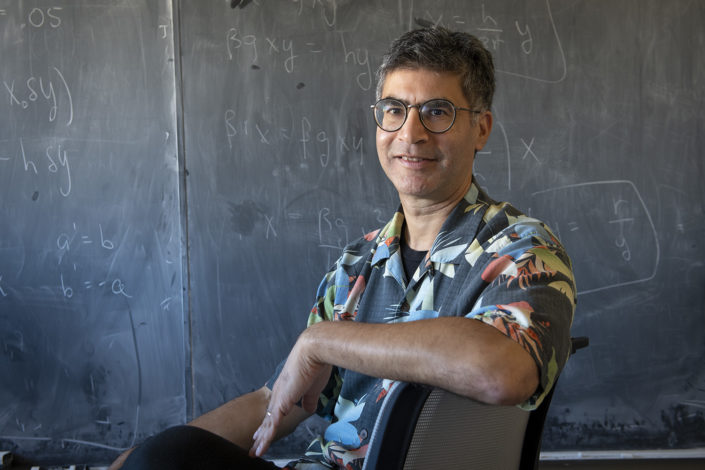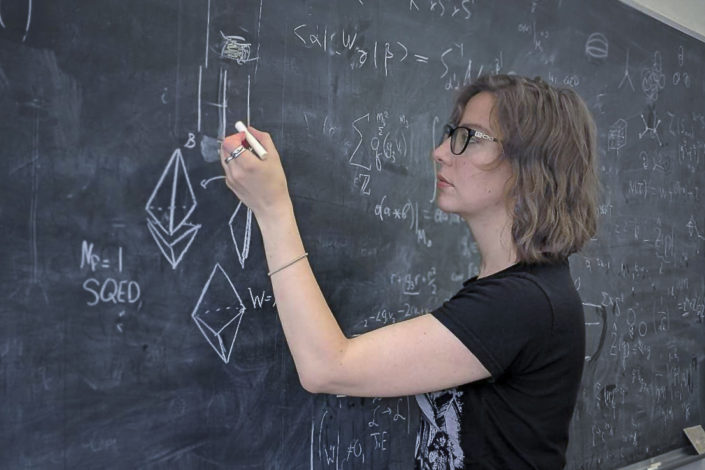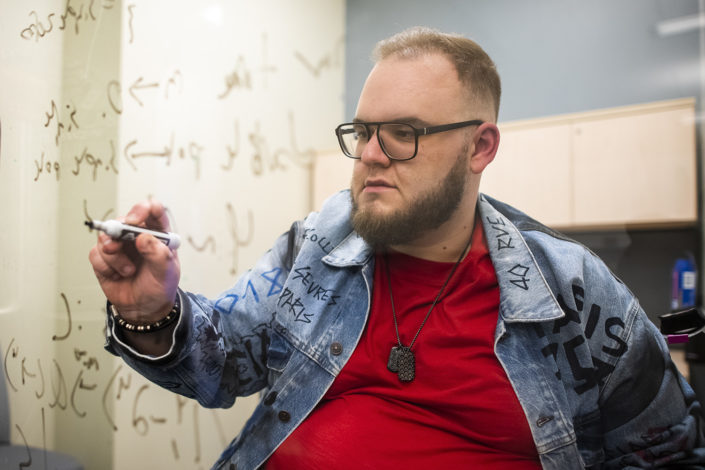What it’s like to be a theoretical physicist
In the first of a series on what the lives of Stanford researchers actually look like, theoretical physicist Shamit Kachru and three of his graduate students talk about the social fabric behind their research, the cycle of confusion and discovery, and the sense of awe – or the cool factor – that drives them.
Walk into Shamit Kachru’s office, and the first things you’ll notice are the couch and the coffee table that sits in front of it, both situated across from a chalkboard that takes up most of one wall. Intentionally or not, it is a social space. Kachru is a professor of physics and director of the Stanford Institute for Theoretical Physics, and what that means in practical terms is that when he’s not reading books or printouts of academic papers, he’s usually talking to other people and sharing ideas.
Of late, Kachru’s ideas include thoughts on how to better understand black holes through the lens of number theory, a branch of pure mathematics concerned with questions such as “What is the distribution of prime numbers?” And as a new member of Stanford Bio-X, more and more of the ideas Kachru thinks about concern biology and the theory of evolution, a field Kachru got into simply by talking to a fellow physicist.
Here, in a glimpse into the lives of theoretical physicists, Kachru, his former graduate student Natalie Paquette and two current graduate students, Brandon Rayhaun and Richard Nally, talk about what it’s like to be a theoretical physicist today – how they got into the field, what keeps them motivated and what their work means to them.
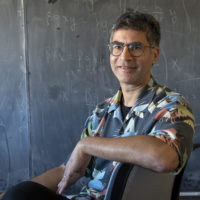
Shamit Kachru
Kachru has been studying physics in one form or another for three decades. He spoke about his newfound interest in theoretical biology, why he likes being an administrator and what motivates him to continue on in science.
“We’re not all marveling at the universe all the time. But occasionally in my work, and these are the moments that keep one going, you do encounter something that really inspires awe in a serious way.”
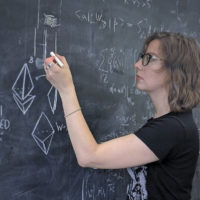
Natalie Paquette
Paquette graduated from Stanford in 2017 and is now a Sherman Fairchild Postdoctoral Fellow at Caltech. She talked about discovering physics in college, why physics never gets old and how, in a way, she has a superpower.
“String theory feels like a little superpower that I have, this physical intuition that enables me to make connections and have insights into things that by rights I should not be able to say anything interesting about.”
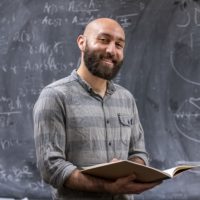
Brandon Rayhaun
Rayhaun is a third-year graduate student and works on string theory with Kachru. He spoke about what science means to him, how no day is particularly typical and the other Stanford professor who inspired him to pursue a career in physics.
“It was 5 a.m. and I had watched maybe four or five hours of Lenny Susskind lectures and I forgot to study for the French exam. That’s when I got more interested in actually pursuing physics as a possibility.”
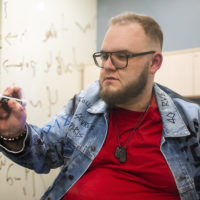
Richard Nally
Nally is a fourth-year graduate student in Kachru’s group studying black holes and number theory. He spoke about the experiences that led him to physics, the excitement of seeing math come alive and the inherently social nature of his work.
“One of the things I like so much about this field is that it’s very social. People tend to be confused about a lot of the same things, so you go talk to somebody else and find out their perspective on it.”

